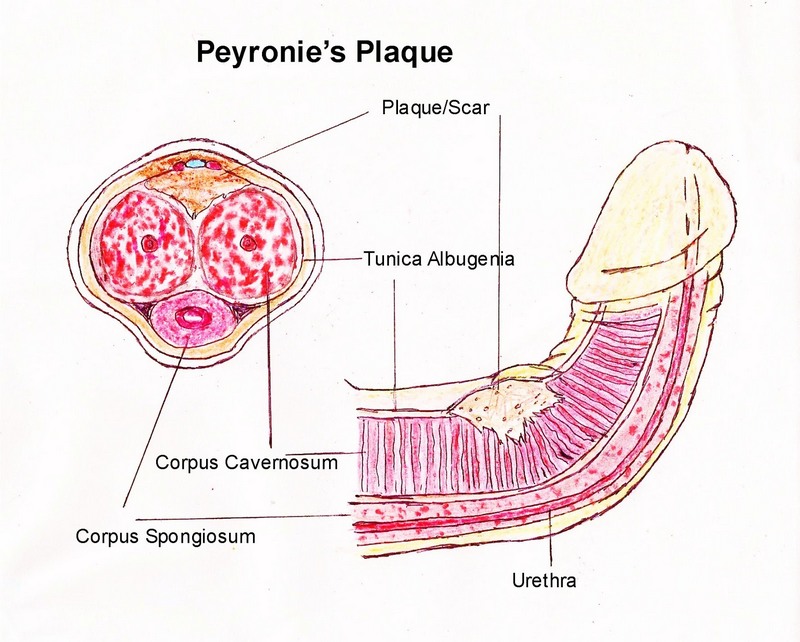Peyronie’s Disease: Causes, Symptoms, Treatment
Peyronie’s disease or commonly known as the condition in males where a scar tissue is formed in the penis resulting in an upward or bent structure of the penis. While it is normal for most of the men with this disease to have normal sex, in some cases it can be difficult or even painful.
Causes of the disease
While the cause of Peyronie’s disease is not properly clear, it may be due to some injury or hit was taken by the patient some time back. One may not realize it but it could be because of that trauma. In other cases, it could be because of genes and heredity. In yet others, it could be because of a side-effect of some drug. However, there is no clear proof of it as of yet.
Target Population
While it is common for middle-aged men to acquire it, in rare cases, young or old men can also suffer from it. However, it must be noted that although chances to acquire Peyronie’s disease increase as you age, it is not a part of normal aging.

Symptoms
While for some, the symptoms may take a while to appear, for others they could manifest overnight. The problem cannot be detected during the normal condition when the penis is soft. However, the plague would hamper the flexibility when the penis is erected resulting in a bent or arch-shaped penis. This is what causes pain in many cases. While the pain is said to become lesser with time, the problem of a bent penis remains. In a few milder cases the disease is said to have gone without any pain or bleeding.
Furthermore, for men who suffer from Dupuytren contractures, commonly identified with symptoms such as scarring in hands known to affect the fingers, are more likely to suffer from Peyronie’s syndrome as well.
Is surgery a solution?
Not everyone is straightaway eligible for surgery. It is only for people for whom the drugs have not shown any results or those who have the mature stage of the disease. In other words, people who are looking for surgery as an option usually need to have either of the two criterions met. People are advised to wait for the mature stage before surgery because in many cases the curvature of the penis heals on its own. Furthermore, all the candidates for the surgery are tested for a proper functioning of their erection and if there are any chances of worsening. Surgery is a common and successful option and there are procedures that one can choose for themselves.
 Penile Plication Procedure: This procedure involves a tuck technique done on the side which is opposite the plague which thus results in the shortening of the longer side of the penis. The procedure is usually carried out by using a local anesthesia which is quite okay since it is considered much better than any operation risk. Furthermore, while the patient satisfaction is found to have been excellent on the majority of the cases and since the procedure is quite simple the preservation of preoperative erection is also there. The only slight disadvantage being a decrease in the length of the penis, but since there is no deformity or any trouble it is probably the most common procedure chosen by people. In most of the cases, people have been able to regain a full erection so the procedure can be said to be one of the most reliable one around.
Penile Plication Procedure: This procedure involves a tuck technique done on the side which is opposite the plague which thus results in the shortening of the longer side of the penis. The procedure is usually carried out by using a local anesthesia which is quite okay since it is considered much better than any operation risk. Furthermore, while the patient satisfaction is found to have been excellent on the majority of the cases and since the procedure is quite simple the preservation of preoperative erection is also there. The only slight disadvantage being a decrease in the length of the penis, but since there is no deformity or any trouble it is probably the most common procedure chosen by people. In most of the cases, people have been able to regain a full erection so the procedure can be said to be one of the most reliable one around.
Incision/ Excision and grafting: This procedure involves the excision of a plague which can be partial or complete. Another way for this involves the process of an incision. A graft is later placed in the space that is left by the procedure. While the advantage is that the penile length is not shortened. However, in the long run, one may experience ED. Therefore, the best candidates for this procedure are those men who have a short penile length or those with the hourglass deformity.
A number of reliable sources admit that placation is a very good option for those suffering from the Peyronie’s disease. Apart from disadvantages in certain cases, the general view is that the surgical option if favorable since it has a high success rate I majority of the cases.







